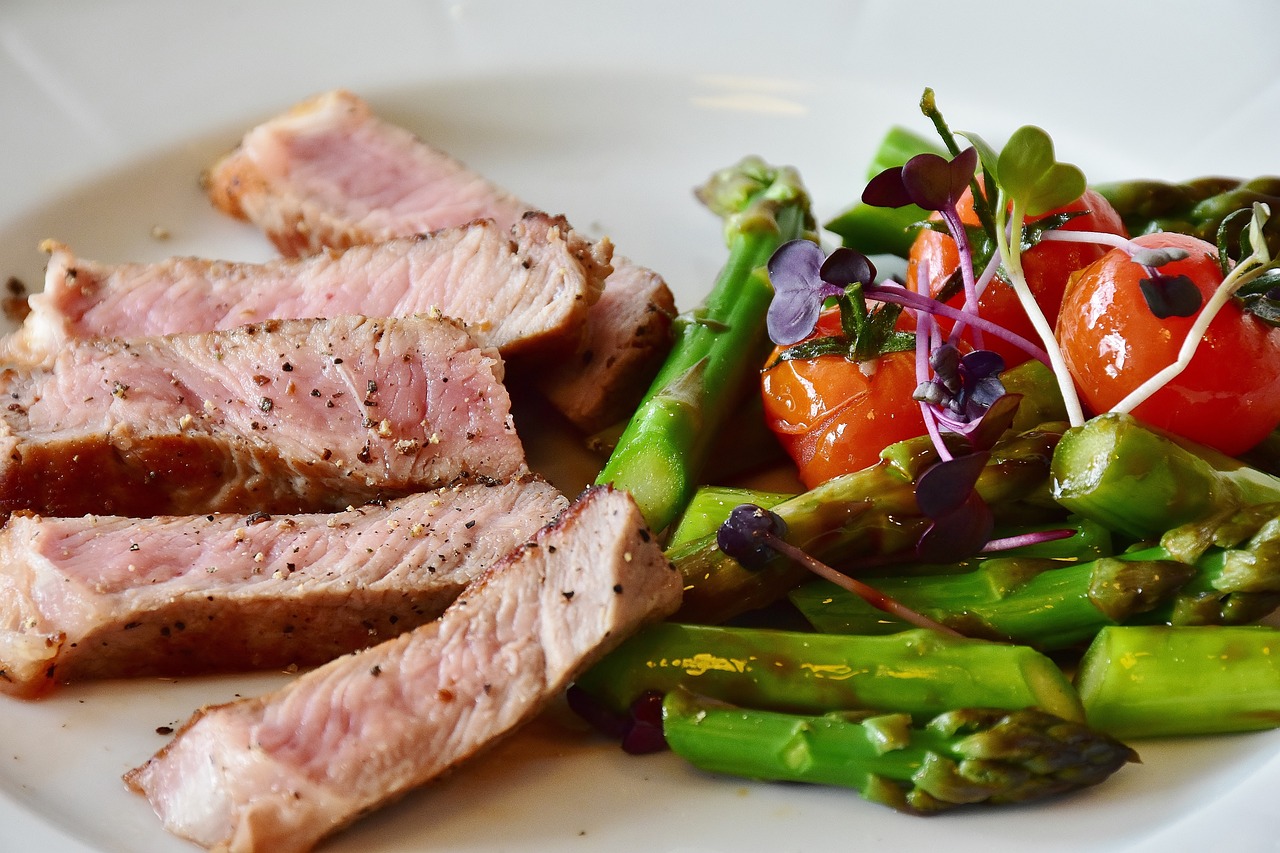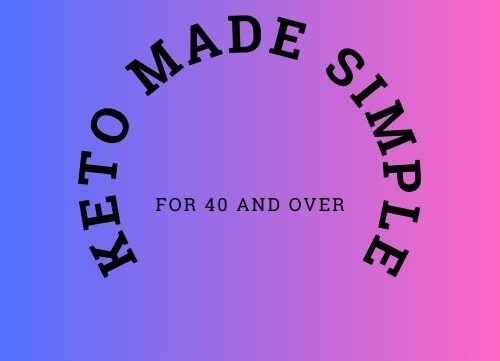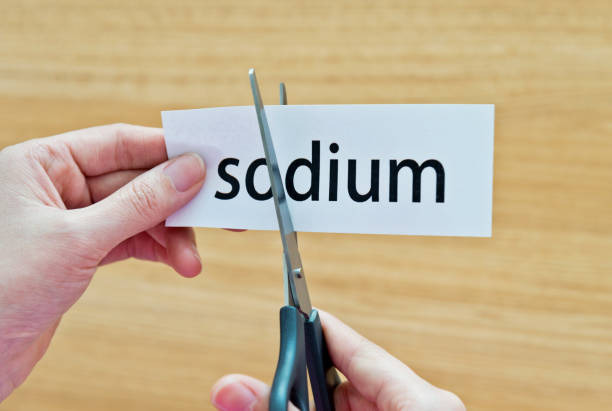Table of Contents
Low Sodium Keto: A Simple Guide to Eating Healthy and Deliciously
A low sodium keto diet combines the benefits of cutting carbs with the need to reduce sodium intake. This approach can help you maintain a healthy weight while making sure you get enough nutrients without risking high blood pressure or other health issues. Many people are turning to this diet not just for weight loss, but also for improved overall health.

As you explore low sodium keto, you’ll discover delicious recipes and meal ideas that keep your taste buds happy while staying within your dietary goals. You can enjoy flavorful meals that use healthy fats and low-carb ingredients, all while keeping an eye on your sodium levels. Adjusting your meals can be easy and satisfying, turning healthy eating into a lifestyle choice.
With the right planning and creativity in the kitchen, you can successfully navigate a low sodium keto lifestyle. You’ll learn how to make meals that fit your taste and help you feel your best, all while meeting your health goals. Let’s dive into the details of this rewarding and delicious way of eating.
Key Takeaways
- A low sodium keto diet supports healthy weight loss without sacrificing flavor.
- You can create tasty meals using low-carb ingredients and healthy fats.
- Proper planning is essential for maintaining a low sodium keto lifestyle.
Understanding Low Sodium Keto
Eating a low sodium diet while on keto can help you balance your health needs. It’s all about knowing how to manage your sodium intake effectively while enjoying the benefits of the ketogenic diet.
What Is a Keto Diet?
The keto diet is a low-carb, high-fat eating plan that changes how your body gets energy. Instead of relying on sugar from carbs, your body starts burning fat for fuel. This process is called ketosis.
By cutting down on carbs, you may experience weight loss and improved energy levels. However, being on a keto diet can also lead to the loss of electrolytes, like sodium. This is important to consider if you’re thinking about reducing your sodium intake further.
Benefits of Low Sodium Intake
Reducing sodium can have various health benefits. First, it can help regulate your blood pressure. High sodium levels can lead to hypertension, which is a risk factor for heart disease.
By keeping your sodium intake low, you might experience fewer fluid retention issues. This can help you feel less bloated and improve your overall comfort.
While you’re on keto, balancing low sodium with your body’s needs helps avoid symptoms like dizziness and fatigue. Remember, it’s important to still get enough sodium to function properly, so aim for a balance.
Combining Low Sodium with Keto
When combining low sodium with keto, focus on whole, nutrient-rich foods. Opt for fresh vegetables, lean meats, and healthy fats. These choices can help you maintain a healthy sodium level while still enjoying the benefits of a keto diet.
Using herbs and spices can add flavor without the extra salt. Incorporating potassium-rich foods, like avocados and leafy greens, also supports heart health and helps balance your electrolytes.
Be mindful of processed foods, as they often contain high levels of sodium. Paying attention to food labels can make a big difference in managing your intake.
Nutritional Foundations
In a low sodium keto diet, understanding the key nutrients is essential. You’ll focus on macronutrients like healthy fats and protein, which play important roles in maintaining energy and supporting overall health. Here’s what you need to know.
Macronutrients in Focus
In a low sodium keto plan, your main macronutrients are fats, protein, and minimal carbs. You typically want to get 70-80% of your calories from fats, 20-25% from protein, and only 5-10% from carbohydrates. This approach helps your body enter ketosis, where it burns fat for energy instead of sugar.
Focusing on the right types of fats is essential. Opt for healthy sources like avocados, nuts, and olive oil. These not only provide energy but also support heart health. Also, consider incorporating omega-3 fatty acids, found in fatty fish like salmon and flaxseeds, as they help reduce inflammation.
The Role of Healthy Fats
Healthy fats are the cornerstone of a keto diet. They provide you with the energy needed for daily activities while keeping you feeling full. Monounsaturated and polyunsaturated fats are fantastic options. They can be found in foods like olive oil, avocados, and fatty fish.
In addition to energy, healthy fats offer various nutrients and support heart health. Including omega-3 fatty acids is vital. They help to reduce inflammation and promote brain health. Just remember, the key is to avoid trans fats and limit saturated fats for optimal results.
Protein and Keto
Protein is crucial for maintaining muscle mass, especially when you’re cutting carbs. In a low sodium keto diet, focus on high-quality protein sources such as lean meats, fish, poultry, and eggs. These options will help you hit your protein goals without adding extra sodium.
You should aim for a moderate protein intake. Too much can kick your body out of ketosis, so plan meals carefully. Balance your protein with healthy fats to keep your energy steady throughout the day. Remember, it’s all about finding that sweet spot for your unique needs.
Planning Your Low Sodium Keto Diet
Getting your low sodium keto diet right takes some planning. Focusing on the right foods and creating a solid meal plan can help you reach your health goals. Here’s how to get started.
Creating a Meal Plan
Start by choosing meals that fit both keto and low sodium guidelines. Focus on whole, fresh foods like vegetables, lean meats, and healthy fats. You might want to include options like grilled chicken, salads, or cauliflower rice stir-fries.
Make a weekly meal plan. Write down breakfast, lunch, dinner, and snacks. Here’s a simple list to get you going:
- Breakfast: Scrambled eggs with spinach
- Lunch: Zucchini noodles with pesto and grilled shrimp
- Dinner: Baked salmon with broccoli
- Snacks: Almonds or celery with almond butter
Using keto recipes that emphasize low sodium ingredients can make meal prep easier while keeping flavors exciting.
Grocery Shopping for Success
When you go shopping, make a list based on your meal plan. Stick to fresh produce, lean proteins, and healthy fats. Avoid processed foods, which tend to be high in sodium.
Look for low-sodium options like:
- Canned vegetables with no added salt
- Fresh herbs for flavor
- Natural nut butters
It’s also helpful to read labels. Many products contain hidden sodium. You want every bite to be not just keto-friendly but low sodium too.
Planning your meals and shopping carefully can set you up for success on your low sodium keto journey. Happy cooking!
Cooking Low Sodium Keto Meals
Cooking low sodium keto meals can be both fun and rewarding. You’ll focus on finding the right ingredients and simple substitutes. With a little planning, you can whip up delicious meals that fit your dietary needs.
Finding the Right Ingredients
Start by checking labels when shopping for ingredients. Look for items that are labeled as low sodium. Fresh vegetables like spinach, zucchini, and bell peppers are great choices. They add flavor without the extra salt.
Make use of fresh herbs such as basil, parsley, and cilantro. Herbs can really elevate your dishes and give them a fresh taste.
When it comes to flours, consider using almond flour. It’s a great low-carb option and works well in many recipes.
Low-Sodium Substitutes
In many recipes, you can replace high-sodium ingredients with healthier options. For example, instead of soy sauce, use coconut aminos. It has a similar flavor but is much lower in sodium.
For seasonings, switch out regular salt for spices. Garlic powder, onion powder, and paprika give dishes a kick without the salt.
If you miss the taste of cheesy foods, try nutritional yeast. It adds a cheesy flavor while keeping things low in sodium.
Meal Prep and Cooking Tips
Meal prepping is key for staying on track. Choose a day to cook a few batches of low sodium keto recipes. Store them in containers so you have meals ready to go.
When cooking, experiment with different cooking methods. Grilling and roasting can enhance flavors without needing a lot of seasoning.
Don’t forget to use healthy fats like olive oil or avocado oil. They can add richness and help make meals satisfying.
Keep it simple, and have fun trying out new low sodium keto dishes!
Delicious Recipe Ideas
Eating low sodium while following a keto diet can be both tasty and satisfying. Here are some great ideas for breakfast, lunch, dinner, and snacks to keep your meals exciting and flavorful.
Breakfast Delights
Start your day right with a low sodium breakfast that fuels your body. Try making a zucchini noodle omelet. Just spiralize the zucchini, sauté it with some olive oil, and add eggs. Season with herbs instead of salt for flavor.
Another option is cauliflower fried rice. Use riced cauliflower, mix in some scrambled eggs, peas, and carrots. Season lightly with garlic powder or pepper. This makes for an excellent, hearty breakfast that keeps you full.
Hearty Lunches
For lunch, you can’t go wrong with a fresh salad. Toss together spinach, cherry tomatoes, cucumber, and avocado. Drizzle with a dressing of lemon juice and olive oil for a refreshing experience.
You can also prepare a baked salmon dish. Season the salmon with herbs, a squeeze of lemon, and roast it. Pair it with steamed broccoli or asparagus for a complete meal. It’s packed with healthy fats and protein to keep you energized.
Satisfying Dinners
Looking for dinner ideas? Try a zucchini noodle stir-fry. Sauté the noodles with bell peppers, mushrooms, and your choice of protein. Top it with a sugar-free soy sauce or coconut aminos for added flavor.
Another great meal is cauliflower fried rice paired with grilled chicken. It’s a fulfilling and nutritious option. Just sauté the rice with veggies and your favorite spices for a delicious twist on an Asian classic.
Healthy Snacks
For snacks, whip up some crispy roasted chickpeas. Season them with spices like cumin or paprika. They are crunchy, flavorful, and low in sodium.
You can also enjoy fresh salads as a snack. Keep a mix of greens on hand, and add your favorite toppings like nuts or seeds. They are light yet satisfying and perfect for a mid-day boost.
With these ideas, you’ll have plenty of delicious options to enjoy while sticking to your low sodium keto diet.
Monitoring Health and Nutrition
Staying on top of your health and nutrition is key when you’re on a low sodium keto diet. Tracking what you eat can help you maintain balance and avoid common mistakes that might affect your progress.
Tracking Nutrient Intake
Keeping a close eye on your nutrient intake is crucial. Use a food diary or an app to log your meals. This helps you see if you’re meeting your sodium needs while staying in ketosis.
Focus on foods high in healthy fats, which helps promote ketosis. Make sure you’re also getting enough electrolytes like potassium and magnesium. These support muscle function and help with digestion.
You might want to set daily goals for sodium, fiber, and carbs. Aim for a sodium intake of around 3,000-5,000 mg while watching for how it affects your blood pressure. Lower sodium can lead to issues like headaches or fatigue.
Understanding Ketosis
To stay in ketosis, your body needs to burn fat for fuel instead of carbs. This process can affect your sodium levels. As your body adapts, it may release more sodium, so you need to replenish it.
It’s important to monitor how you feel during this transition. If you experience symptoms like dizziness or fatigue, it could be due to low sodium. Eating foods like bone broth or adding salt to your meals can help.
Knowing how digestion works on keto can also aid in nutrient absorption. Fats take longer to digest, which means you may feel fuller longer, but it can also impact how quickly you absorb nutrients.
Avoiding Common Pitfalls
There are a few common pitfalls to watch out for. One mistake is reducing sodium too much without replacing it. This can lead to symptoms of “keto flu,” including nausea and cramps.
Be careful with packaged foods, which can sometimes seem low in sodium. Always check the labels to ensure you’re not missing out on important nutrients.
Another issue is not drinking enough water. Dehydration can make your body lose more sodium, leading to headaches and fatigue. Try to drink plenty of fluids and consider electrolyte supplements if needed.
By keeping these points in mind, you can better navigate your low sodium keto journey while maintaining your health and well-being.
Sustaining a Low Sodium Keto Lifestyle
Maintaining a low sodium keto lifestyle takes dedication and smart choices. You’ll need to make a long-term commitment, adapt to different social situations, and find ways to stay motivated along the way. Let’s dive into some practical strategies to help you succeed.
Long-Term Commitment
A low sodium keto diet is more than just a phase; it’s a lifestyle change. Start by educating yourself about healthy eating habits that fit your dietary needs. Focus on whole foods such as vegetables, lean proteins, and healthy fats. These foods not only align with keto but also help manage sodium intake.
Track your meals with a food diary or a mobile app. This way, you can be mindful of your sodium and carb levels. Remember, the goal is to avoid processed foods that are often high in sodium. Find recipes that excite you, making cooking an enjoyable part of your day.
Adapting to Social Situations
Eating out or attending social gatherings can be tricky when following a low sodium keto diet. Start by checking restaurant menus online before you go out. Look for dishes that can be modified, like asking for dressings and sauces on the side.
When you’re invited to a potluck, consider bringing a low sodium keto dish. This not only gives you something safe to enjoy, but it can spark conversations with friends about your healthy choices. Communicating your dietary needs to others can help minimize pressure and ensure you have options at gatherings.
Staying Motivated
Staying motivated on your keto journey is crucial, especially when limiting sodium. Set small, achievable goals for yourself. Celebrate these milestones—like sticking to your diet for a month—by treating yourself to a non-food reward, such as new workout gear.
Find a community or support group where you can share your experiences. Connecting with others on the same path can provide encouragement and new ideas. Keep in mind why you started this journey, whether it’s to reduce hypertension, improve heart health, or simply feel better. Your commitment to this healthier lifestyle can make a lasting impact on your health.
Frequently Asked Questions
If you’re looking to balance low sodium with a keto diet, there are a few key strategies to consider. From meal planning to snack ideas, it’s important to focus on your intake and choose foods wisely.
How can I create a low sodium, low carb diet menu?
To create a low sodium, low carb menu, start by focusing on fresh, whole foods. Use herbs and spices for flavor instead of salt. Include plenty of non-starchy vegetables, proteins like chicken and fish, and healthy fats such as olive oil and avocados.
What are some high-protein foods that are low in carbs and sodium?
High-protein foods that are low in carbs and sodium include eggs, turkey, and certain fish like salmon. Tofu is also a great option. When selecting these, look for varieties without added sodium.
Where can I find recipes that are low in fat, sodium, and carbs?
You can find recipes on keto-focused websites and blogs. Look for sections dedicated to low sodium meals. They often provide a range of ideas that fit your dietary needs.
Can you recommend any simple low carb snacks with low sodium?
Great low carb snacks include raw vegetables with hummus or guacamole, cottage cheese, and nuts like almonds. Just keep an eye on the sodium content by choosing unsalted nuts or plain options.
What dinner ideas fit into a low sodium and low carb dietary plan?
For dinner, consider grilled chicken with steamed broccoli or zucchini noodles with pesto. Stir-fries using tofu or shrimp with lots of veggies can be tasty too. Season with low-sodium items for extra flavor.
How can I maintain a low sodium eating plan while doing keto?
To maintain a low sodium keto plan, read labels carefully and choose fresh ingredients. Meal prep can also help you control what goes into your dishes. Always opt for natural flavors instead of salt-based seasonings.

